The Euro Nymphing Complete Guide: Tips and Tricks Of Experts
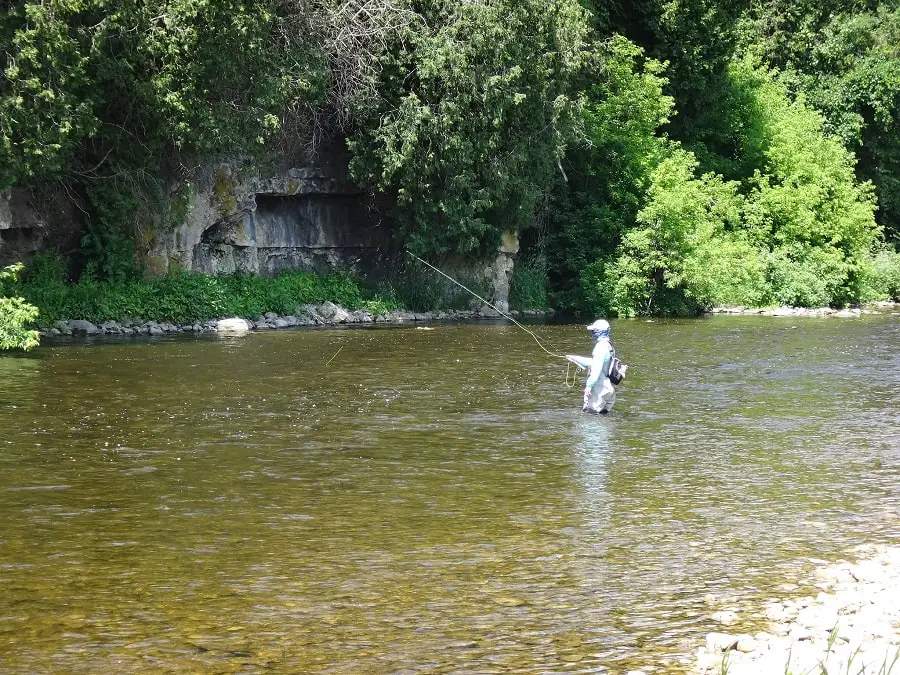
Euro nymphing can mean a lot of different things to different people because it is a mix of multiple methods or variations. It is also called European Nymphing, Tight Line Nymphing, and Modern Nymphing.
I’ve had the opportunity to learn from experts, including a world champion fly angler, a Team USA fly fishing coach, and many members of national fly fishing teams.
Since 2008, I have also been teaching all forms through my guide service.
I have determined that some versions are much more effective when used in different types of rivers and I’ll discuss that below.
What Is Euro Nymphing?
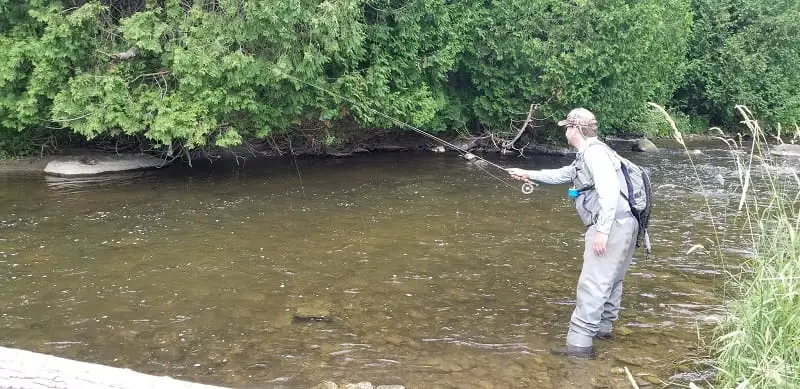
Euro Nymphing is a short line nymphing method that uses very thin leaders and tippets, weighted flies, and a piece of colored line known as a sighter.
All of this is used together to suspend the nymphs off the bottom while the angler maintains direct contact with the flies, which greatly improves strike detection.
Why Is It Better?
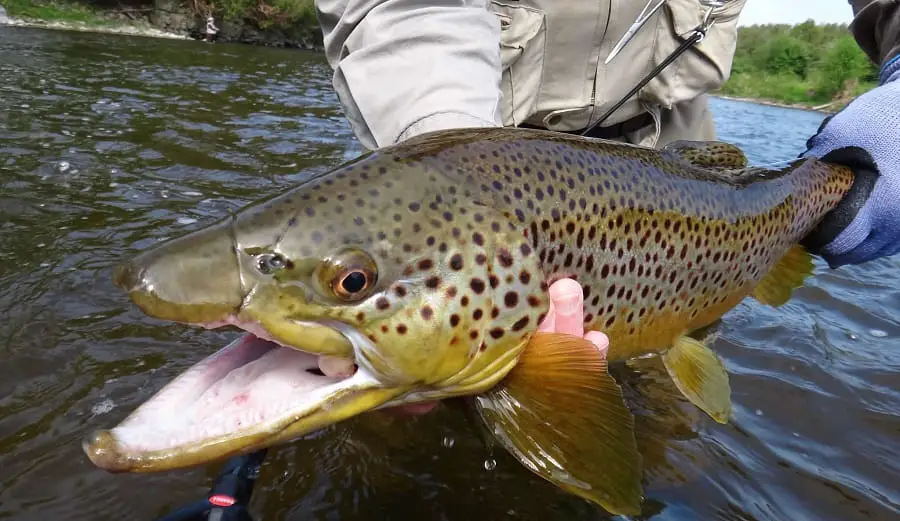
There are three things that make European Nymphing better than other traditional nymphing methods.
- Speed Control: What makes this method superior is the ability to control the speed of the fly. The use of super thin tippets and no floating indicator prevents the surface current from pushing the flies at abnormally fast speeds. This allows for a slower natural presentation of the fly. See Dead Drift Nymphing Speed: Speed Control.
- Strike Detection: With this method, my line is under controlled tension from the bottom fly to the rod tip, and with the use of a Sighter, strike detection is superior, which means I will hook more fish.
- Depth Control: When using a sighter and a good pair of polarized sunglasses, I can adjust the depth of my flies through the entire drift as needed based on what I see, just by lifting or lowering the sighter.
Origin Of European Nymphing
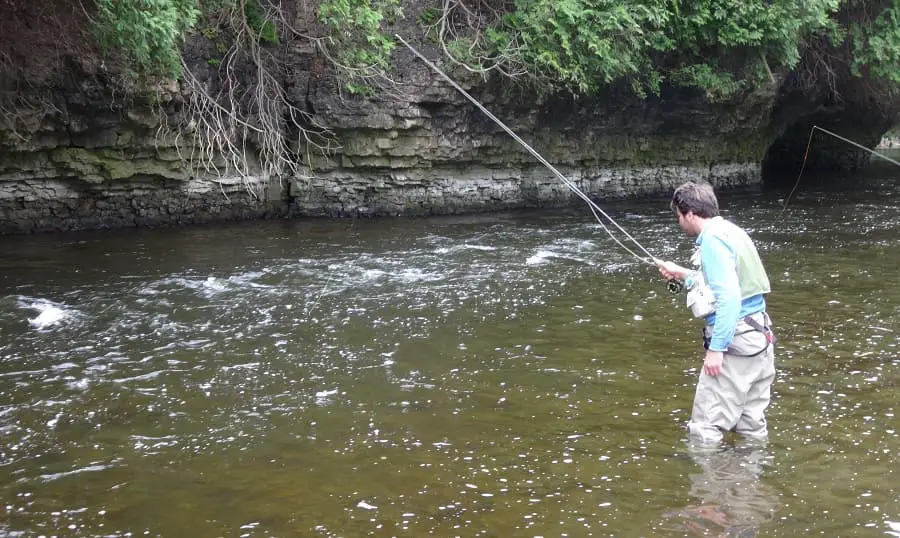
I first learned the history of European Nymphing from Jack Dennis who was one of the first coaches of the USA National Fly Fishing Team.
Jack’s version of the story starts when the USA started participating in the European fly fishing competitions which is when anglers from outside of Europe first started seeing an unusual method they called European-Style nymphing. This is also when they realized how effective it really is since the Europeans dominated the competitions.
Back then, it started with a Polish Nymphing version, which was then taken and changed by the Czech competition anglers. Their method became known as the more popular method called Czech Nymphing.
Other variations include French Nymphing and Spanish Nymphing
Modern Nymphing and Tight Line Nymphing
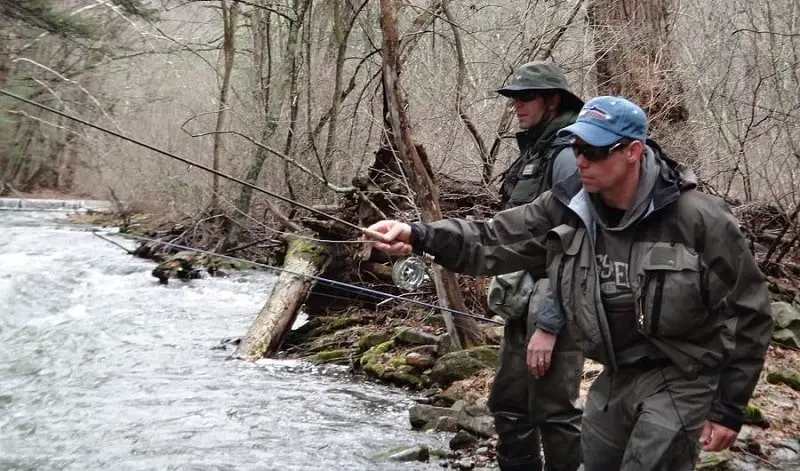
Despite the many versions, the basic principles of Tight-Line Nymphing, also known as Modern Nymphing is a high rod tip, a long leader, thin tippets, weighted nymph flies, a Sighter, and controlled tension on the leader and the fly.
These methods are simply variations or combinations of Euro Nymph methods.
The Euro Rod
The Best Euro Rod Lenght: I can use any fly rod, however, the trend is to use longer rods of 10 to 11-foot and there are now very good euro rods available.
I find a longer rod of 10 feet is ideal for the small to mid-sized rivers that I fish. On larger rivers nymphing rods of 10’6 to 11’6 are good options.
When dealing with long rods, I recommend going lighter than normal since the longer rod makes the rod heavier.
Euro Best Rod Weight: I use 10 foot 2 weights, and 3 weights for brown trout up to 28 inches. For larger trout over 30 inches, maybe upsize to a 4 or 5 weight but honestly, I’m sure I can land a 33-inch brown trout on my 3 weight.
What Type Of Reel?
Any type of fly reel works or these methods. It is best to match the fly reel to the rod.
The Fly Line
Fly lines designed for this method are not required. As long as the leader is set up properly, the fly line is not used or rarely anyways, so the fly line is irrelevent.
Weights and Indicators
Unlike traditional nymphing, there is no traditional ball or yarn-type strike indicator used and no split shot are added to the leader, and there is no mending required.
Occasionally, under certain situations and for certain reasons like when using a single size 18 to 22 fly, I will add weights like split shot or weighted putty to the leader to get the fly down and to be able to cast.
The Sighter Line
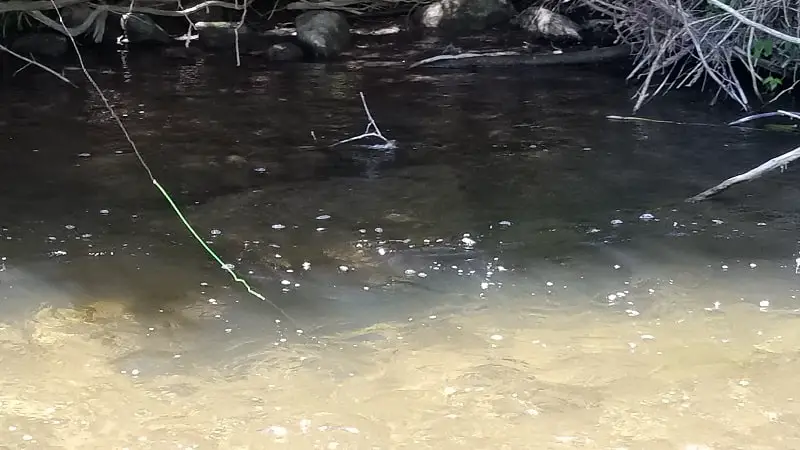
One of the key elements that makes this method different from other nymphing styles is the multi-colored section of line in the leader called a Sighter.
The sighter is a 12 to 36-inch piece of colored monofilament that goes part way up the leader and is strategically placed in an area that best suits the river conditions.
When fishing deep the sighter line might be 6 to 10 feet up the line, but when fishing shallower water under 3 feet deep the sighter line can be 3 to 6 feet up from the lowest fly.
In the past, a short peice of colored mono was used for the sighter. Now, specially made sighter tippets are available in bi-colored, or tri-color. Multiple colors aid the angler in seeing the sighter easier.
Flies: Euro Nymphs
Specially weighted nymphs called Euro Nymphs are used. The flies are tied with a Tungsten bead head or with lead wire wrapped around the hook shank before the fly is tied.
Depending on the fly anglers ability and the laws in the area, 1 to 3 nymphs are used at a time to cover different parts of the water column all at once.
Personally, I use 2 nymphs whenever possible.
Why Use Wieghted Flies For Euro Nymphing?
Weighted flies sink down into the strike zone fast and they stay there. They allow me to maintain tension from the bottom fly to the rod tip, which aids in strike detections.
Weighted flies eliminate slack in the line, which greatly improves strike detection.
The weight of the fly enables me to cast long leaders up to 40 feet with no fly line used.
Bead / Hook Size Table
| Bead Size | mm | Use Hook Size |
|---|---|---|
| 1/16″ | 1.5 mm | 18 – 20 – 22 |
| 5/64″ | 2 mm | 16 – 18 – 20 |
| 3/32″ | 2.3 mm | 14 – 16 – 18 |
| 7/64″ | 2.6 mm | 12 – 14 – 16 |
| 1/8″ | 3 mm | 10 – 12 – 14 |
| 5/32″ | 4 mm | 8 – 10 – 12 |
| 3/16″ | 4.5 mm | 6 – 8 – 10 |
| 1/4″ | 5 mm | 4 – 6 – 8 |
European Nymph Styles
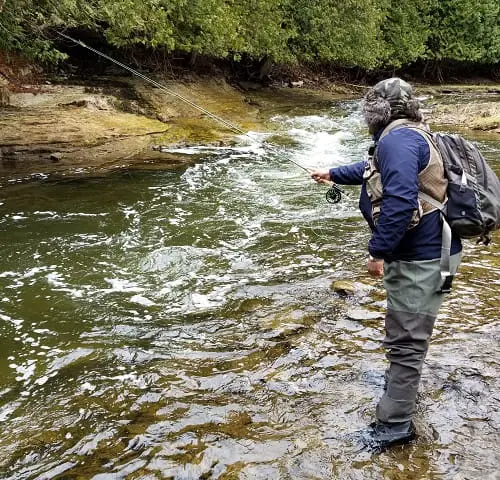
Polish Style Nymphing
The original Polish Nymphing method uses a short leader that was about 2/3rds the length of the rod, which means I would use a 7-foot leader with a 10-foot rod. This would be combined with two or three heavy flies and a piece of colored mono between the top of the leader and the fly line.
Czech Nymphing
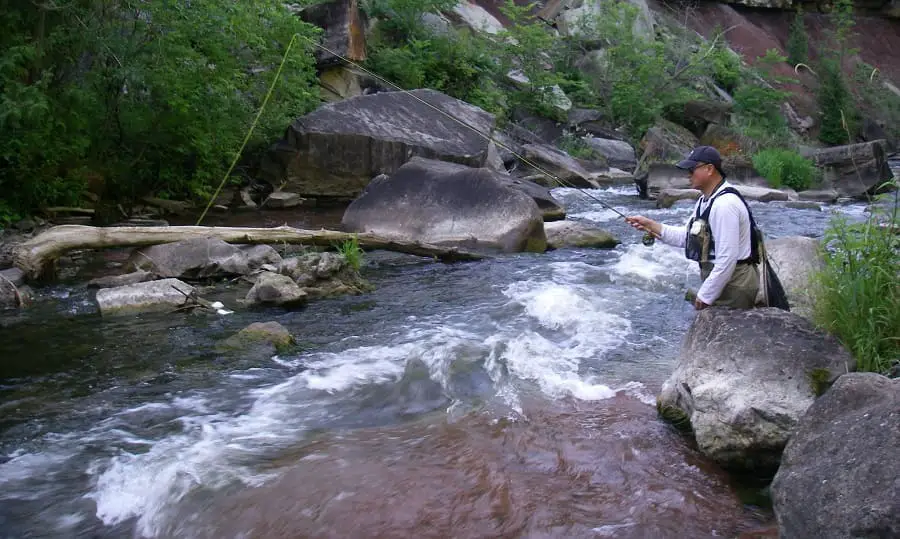
Czech Nymphing is what made European Nymphing popular. Czech nymphing is basically a copy of the Polish-Style of Nymphing method that was slightly modified so that the sighter was more in the middle of the short 7 to 9-foot leader and the heavily weighted flies are then slowly pulled along under the rod tip.
Spanish Nymphing
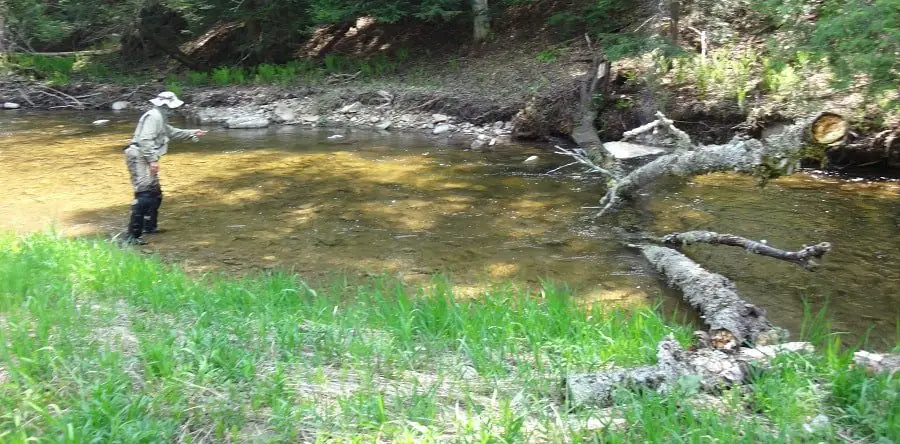
Spanish nymphing is what I describe as long-line Czech-style Nymphing. The Spanish Nymphing leader in tournaments is usually double the length of the rod. That means the leader is 20 feet long on a 10-foot rod which allows the angler to fish more water and keep the nymphs in the strike zone longer.
The reason for the extra-long leader is that some rivers are shallow and very clear and the trout will spook easily if the angler gets too close to them.
Spanish Nymph anglers will often stand behind or below the fish and cast upstream and across while staying behind the fish as much as possible.
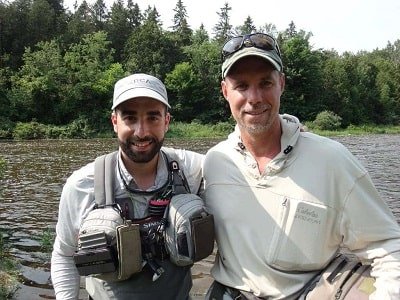
The primary advantage to Spanish Nymphing is that I can effectively present a fly to fish that are far away from me without spooking them. I can make very long drifts which putsmy fly in front of a lot more fish than the shorter line nymphing methods.
French Nymphing
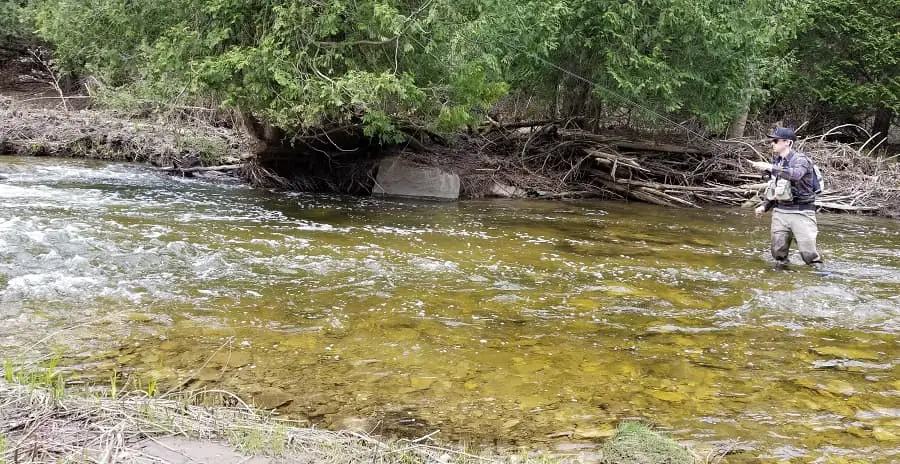
French nymphing is very similar to Spanish nymphing with the exception that the French tend to cast straight upriver and retrieve the flies back, and they end the drift just in from of them.
The advantage of the French Nymphing method is that I am directly behind the fish at all times, which makes it impossible for the fish to see me. The French adaptation is meant for low clear waters with very nervous trout.
The original French Nymphing versions also used very small flies which are much smaller and much lighter than big heavy Czech nymphs.
Why Such Long Leaders?
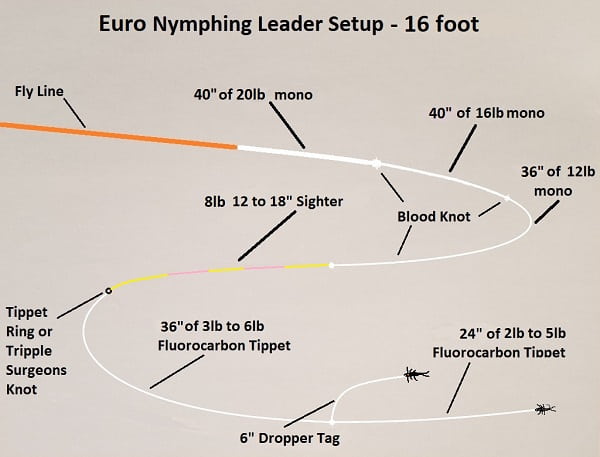
I use 20 or 40-foot leaders when fishing wild nervous trout in clear waters.
- I can stay far away from the fish and present the fly far enough away that I do not spook the fish.
- There is no fly line landing on the water which can also spook fish.
- The angler holds the rod tip high and the entire leader can stay off the water.
- Long leaders have the advantage of fishing spots that are too far to wade to and are not accessible with other short-line methods.
The version I teach my clients is a combination of Spanish and French Nymphing which both use very long leaders. I tell my clients;
Get good and comfortable casting and fishing with a ten-foot leader, then add a few feet and get good with that, and repeat until you are comfortable casting over 20 feet of leader.
Graham, A Perfect Drift Guide Company
The Euro Nymph Set Up
I have taught thousands of anglers how to Euro Nymph and the honest truth is that for the average angler, the two things that matter the most are the rod, and a well set up leader.
The Best Setup:
- Fly Rod – Get a 10 foot 3 weight Euro Rod that fits your budget.
- Fly Reel – Any fly reel will work, just match it to the rod size. Due to the longer length, going one size up can make the rod less tip heavy.
- Fly Line – An all-purpose fly line works fine is there is a long enough leader being used. (16 to 24 feet is good)There are also competition fly lines specifically made for this style of nymphing.
- Leader – A Spanish or French Leader setup is best for shallow to mid-depth rivers that are primarily under 6 feet deep. The leader should start with a stiff butt section, have a long middle section, a sighter, and a 3 to 6-foot section of tippet
- Tungsten Flies – A variety of sizes and types of tungsten bead head flies is best.
- Soft Weight Tungsten Putty – If my fly is not heavy enough or I am only allowed to use one fly and I need to use micro flies smaller than size 18 I will add tungsten putty about 3 to 6 inches up the line from the fly.
- Tippet Ring – Tippet rings are a great way to attach very thin tippets to the thicker sighter.
Myself and other guides are also now Euro Nymphing for steelhead and Salmon which has proven to be very effective.
You have just read the shortened and revised version, if you would like more details and my advanced leaders setup, see full article at https://troutandsteelhead.net/european-nymphing-full-article/.
Tight Lines,
Graham

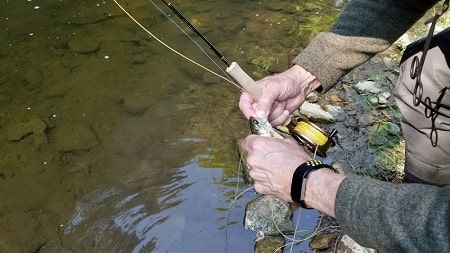
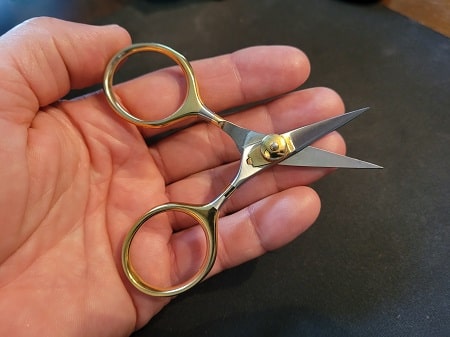
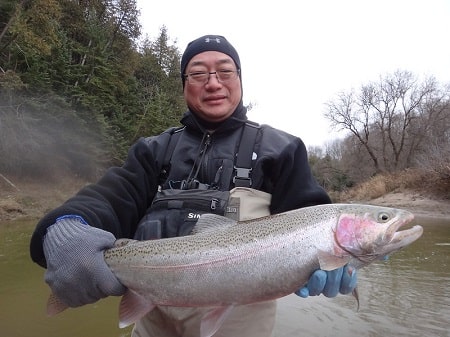
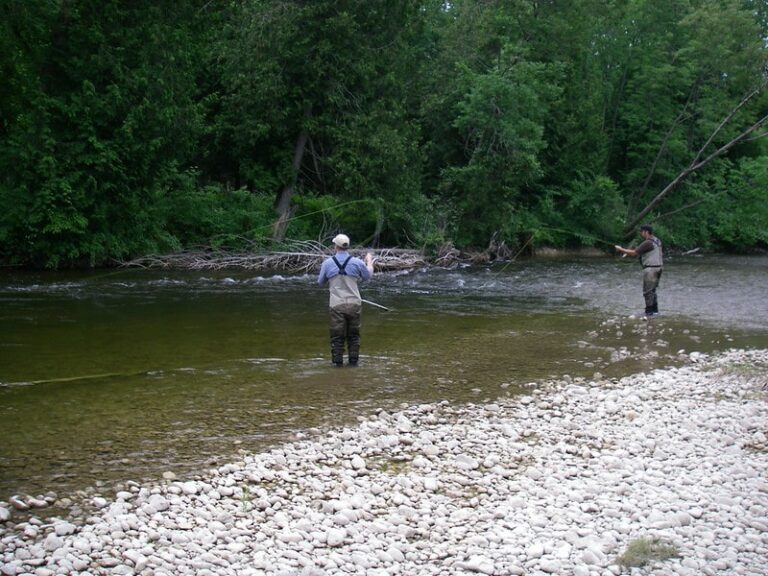
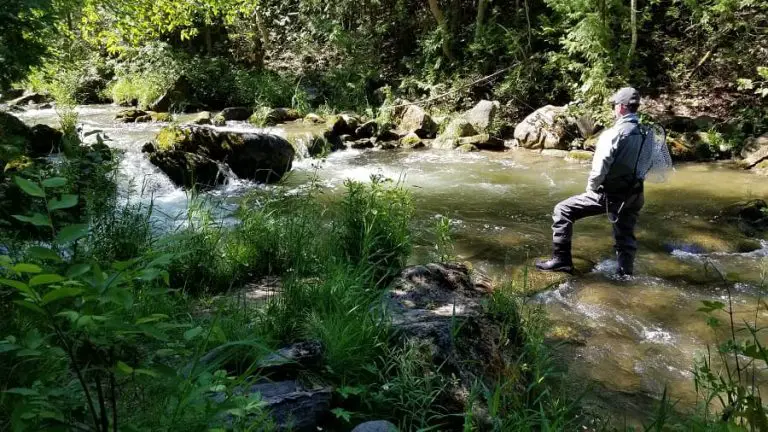
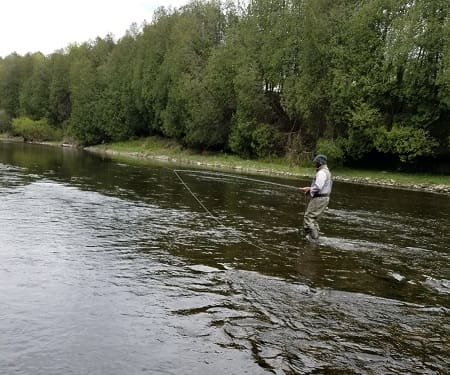
I fish a lot using a micro leader and very small nymphs. At other times, I fish with trout beads using a thicker leader and a bobber. I was wondering if you have ever combined the two methods, i.e., fish trout beads on a Spanish leader.
Hey Alex,
The only time I Euro nymph with beads is when fishing with steelhead. The glass beads are heavy and are great for this method. I don’t see why this would not work for trout too.
Come on guys!
This is high sticking!!!
Folks were doing this back in the late 80’s. Loomis built the nost beautiful 10′ 3wt that was comparable to a hoover vacuum cleaner in Gene Takeuchi’s hands.
Does the fly fishing world always have to reinvent the wheel?
Hey George,
lol.. A very skilled but old-school local guide said the same thing to me one day, and he was wrong too. The thing is that if you don’t know both methods intimately and if you don’t fully understand them both, you can’t honestly say they are the same because they are not.
I also fished high stick nymphing methods from the late 80s to about 2006 so I fully understand it, but I have also been perfecting my skills with euro nymphing from around 2006 to now. Back then, I was very hesitant about the Euro nymphing method when I first saw it too, and was just like you and figured it’s the same thing as high-stick nymphing.
I can assure you that what you think high sticking is will be very different than what Euro nymphing is. But the only way you will understand the difference is if you truly understand both methods.
Best of luck,
Graham
Do you do much euro style for steelhead??
I am just getting into it!
Caught over 6 steelhead in the last two weeks. That’s so much better than I’ve ever done fishing for steelhead!
Looking to improve/continue learning how to more effectively approach them like this on my river (rogue river Oregon) if you could contact me and have some conversation that would be amazing. Thank you 🙏
Hi Kaleb,
I do a lot of Euro nymphing for steelhead and have taught many anglers and other guides my methods. I just updated my article Euro Nymphing For Steelhead, you should check it out.
I use an 8.5 ft. 2wt. Orvis Western to fish for bluegill in my local pond. Often, I have to lift the bluegill, crappie, or even twelve inch bass a few feet out of the water to where I am standing to catch it or the leader in order to remove the hook and toss the fish back. Can a Euronymphing rod handle that stress? I often wish for the extra length due to shoreline conditions.
Hi Michael,
I and my clients have landed many 4 to 6 pound brown trout on my Euro rods. I would assume they are as strong as an 8.5wt.
Good luck,
Graham